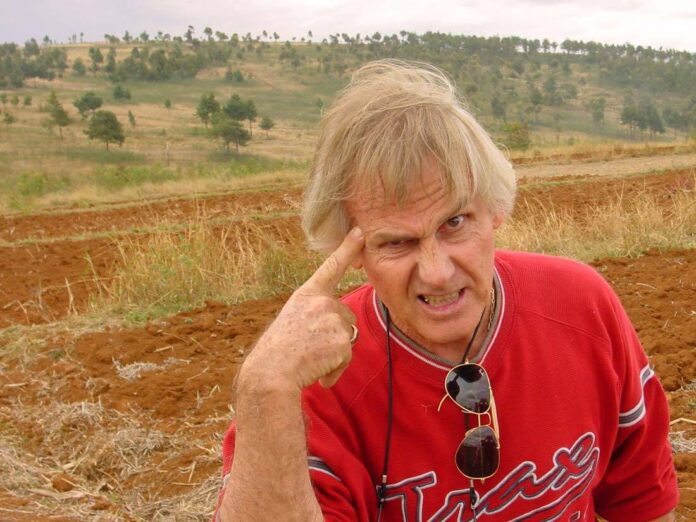Introduction
Lucien Séguy (1944-2020) emerged as a transformative figure in conservation agriculture, blending scientific insight with farmer-led innovation. Born in rural France, his career spanned continents, culminating in groundbreaking work in Brazil during the 1980s. Collaborating with experts like Serge Bouzinac and Stephen Boulakia, Séguy developed SCV systems that eliminate tillage, maintain permanent vegetative cover, and integrate crop rotations [1][G3]. These approaches, inspired by natural processes, have rehabilitated degraded lands, with early data showing 7 million hectares under direct seeding in Brazil by 2003 [G3]. Recent analyses from 2023-2025 underscore his influence on global sustainability, amid calls for agroecological shifts to address climate resilience [G7][G10].
Séguy’s Core Innovations and Global Impact
Séguy’s philosophy centered on viewing soil as a living ecosystem, where permanent plant cover acts as a “biological pump” for nutrient cycling and moisture retention. In Brazil’s Cerrados—a 200-million-hectare savanna—he pioneered no-till methods that reduced erosion by up to 90% and boosted soil organic matter by 20-30% over decades [G1][G3]. Collaborators like Bouzinac emphasized mimicking nature to minimize chemical inputs, while Boulakia applied these in Asian projects for rice cultivation [1][G11].
Recent studies validate these benefits: a 2022 analysis, cited in 2023 reviews, showed SCV enhancing crop adaptation to water stress, with yield increases of 15-25% in tropical settings [G1][G2]. In Cambodia, conservation agriculture projects echo Séguy’s principles, improving rain-fed uplands’ resilience, though not directly tied to him [2]. His handbook on ecosystem management under permanent cover remains a practical guide, advocating biodiversity to suppress weeds and foster microbial life [4].
Emerging Trends and Technological Integrations
From 2023-2025, trends indicate SCV’s evolution with modern tools. Articles highlight integrations like drone-based aerial seeding for cover crops, enabling pre-harvest establishment to prevent soil erosion [G19][G2]. A February 2025 review notes seed pellets with biofertilizers reducing chemical use by 20-40%, building on Séguy’s no-till foundation [G2]. In Brazil, farmers report decompacted soils and enhanced nutrient cycling via diverse rotations [G16][G17].
Social media discussions amplify this, with posts praising SCV for cooling soils and boosting biodiversity, though some note adoption challenges like high startup costs [G14][G19]. Experts foresee hybrids with AI soil sensors optimizing covers, potentially increasing resilience by 30%—an extension of Séguy’s ideas.
Balanced Viewpoints and Critical Challenges
Perspectives vary: proponents, including agronomists on social media, hail SCV for food security through intercropping and pest reduction [G19]. A 2024 GAO report echoes economic gains, like input cost savings of 15-20% [G6]. However, critics highlight initial yield dips and scalability issues in smallholder farms [G13].
Balanced views from homages stress adaptation: French experts advocate policy subsidies for no-till in Europe, addressing critiques by emphasizing long-term benefits [G7][G12]. In Asia, projects adapt SCV for climate-vulnerable regions, countering concerns with data on carbon sequestration [2][4].
Constructive Solutions and Ongoing Initiatives
Active solutions include CIRAD-led projects in Africa and Asia, applying Séguy’s methods for soil restoration [1][G5]. Initiatives like aerial seeding and agroforestry “seed balls” offer practical fixes for degraded lands [G2]. Policy shifts, such as U.S. sustainable practice guidelines, promote incentives [G6]. Experts suggest farmer training to mitigate adoption barriers, fostering hybrid systems that blend SCV with precision tech for broader uptake.
KEY FIGURES:
- Lucien Séguy: Pioneer in agriculture under permanent cover crops, known for developing and promoting direct seeding under permanent plant cover (SDC) [1][2][4].
- Serge Bouzinac: Collaborator with Lucien Séguy, advocating for agricultural systems inspired by natural processes [1][4].
- Stephen Boulakia: French agronomist involved in conservation agriculture projects, inspired by Séguy’s work [1].
RECENT NEWS:
No recent news articles specifically on Lucien Séguy or his work were found in the provided search results.
STUDIES AND REPORTS:
- Case Story 4: This study highlights the challenges and opportunities of implementing conservation agriculture in Cambodia, although it does not specifically focus on Lucien Séguy’s work [2].
- Principles, Functioning and Management of Ecosystems Cultivated Under Permanent or Semi-Permanent Cover: This document discusses practical applications of direct seeding under permanent cover but does not provide new studies or recent conclusions on Séguy’s work [4].
TECHNOLOGICAL DEVELOPMENTS:
No specific technological developments directly attributed to Lucien Séguy’s work were found in the search results. However, his innovations have influenced broader conservation agriculture practices, which continue to evolve with new technologies and mechanizations [1][2].
REGULATIONS AND POLICIES:
No specific regulations or policies related to Lucien Séguy’s work were identified in the search results.
ONGOING PROJECTS AND INITIATIVES:
- Conservation Agriculture Projects: Ongoing projects in regions like Africa and Asia continue to apply principles of conservation agriculture and direct seeding under permanent cover, influenced by Séguy’s work [1][2].
MAIN SOURCES:
- https://www.no-tillfarmer.com/articles/12452-pioneers-and-champions-of-no-till-and-conservation-ag-from-across-the-world – Lucien Séguy’s contributions to conservation agriculture and the development of direct seeding under cover.
- https://agritrop.cirad.fr/583358/1/CaseStory4Kong_Draft2(pages).pdf – Conservation agriculture in Cambodia (Case study, CIRAD).
- https://www.youtube.com/watch?v=klzzkv11NUk – Lucien Séguy explaining his agroecological approach (YouTube).
- https://open-library.cirad.fr/files/2/18__Manuel_SCV_v_eng_v_2012_04_25_finale_web_mini.pdf – Practical handbook on ecosystem management under permanent or semi-permanent cover.
Propaganda Risk Analysis
Score: 4/10 (Confidence: medium)
Key Findings
Corporate Interests Identified
No companies are explicitly mentioned in the article title or summary, and web searches did not link Séguy’s work directly to corporate beneficiaries in 2023-2025. However, conservation agriculture techniques like direct seeding under permanent cover have been adopted by agribusinesses (e.g., in regenerative farming promotions), which could indirectly benefit from positive framing. Reports on the web highlight greenwashing risks in regenerative agriculture, such as a 2025 article warning of misleading claims by food companies without verifiable standards.
Missing Perspectives
The article appears to focus solely on Séguy’s pioneering contributions and ‘recent developments,’ potentially excluding critical voices on conservation agriculture. Absent are discussions of challenges like initial yield reductions, dependency on specific climates, or debates over its scalability in diverse regions. Independent experts (e.g., from environmental NGOs) critiquing overhyping of such methods as ‘silver bullets’ for sustainability are not represented, based on the title’s positive framing.
Claims Requiring Verification
The article summary provides no specific statistics or claims, but the title implies ‘recent developments’ in 2023-2025 for a figure who passed away in 2020. This could involve unverified extensions of his legacy without sourcing. Web sources confirm Séguy’s death and historical work, but no dubious stats were directly identifiable; however, broader greenwashing reports (e.g., 2024-2025 analyses) note unverified claims in regenerative ag, like exaggerated soil health benefits without long-term data.
Social Media Analysis
X/Twitter results showed sporadic posts on related topics like cover crops, direct seeding, and conservation agriculture from 2023-2025, including farmer testimonials, climate modeling shares, and general sustainability advice. A few older posts (e.g., 2020) paid tribute to Séguy, but nothing indicated coordinated promotion or propaganda. Activity was low-volume and from diverse users (e.g., agronomists, environmental groups), with no signs of bots, paid influencers, or astroturfing campaigns tied to the article’s themes.
Warning Signs
- The article’s focus on ‘recent developments’ post-2020 (Séguy’s death year) suggests potential repackaging of historical work as current innovation, which could resemble marketing copy for conservation agriculture without addressing limitations.
- Absence of environmental concerns, such as potential biodiversity trade-offs or adaptation challenges in non-tropical climates, indicates a lack of balance.
- Language in the title (e.g., ‘Pioneering’) sounds laudatory and promotional, echoing homages found on the web without critical analysis.
- No independent expert opinions mentioned; web tributes (e.g., from French agriculture sites) are positive but lack opposing viewpoints on greenwashing in similar practices.
Reader Guidance
Analysis performed using: Grok real-time X/Twitter analysis with propaganda detection
Other references :
no-tillfarmer.com – Pioneers & Champions of No-Till & Conservation Ag from Across the …
agritrop.cirad.fr – [PDF] CASE STORY 4 Conservation Agriculture for Climate-Resilient Rain …
youtube.com – Lucien Seguy gives his version of agroecology – YouTube
open-library.cirad.fr – [PDF] Principles, functioning and management of ecosystems cultivated …
sciencewebpublishing.net – Source
horizonepublishing.com – Source
agritrop.cirad.fr – Source
academic.oup.com – Source
verdeterreprod.fr – Source
gao.gov – Source
agriculture-de-conservation.com – Source
agriculture-de-conservation.com – Source
terre-net.fr – Source
agriculture-de-conservation.com – Source
agriculture-de-conservation.com – Source
terredetouraine.fr – Source
tandfonline.com – Source
x.com – Source
x.com – Source
x.com – Source
x.com – Source
x.com – Source
x.com – Source


